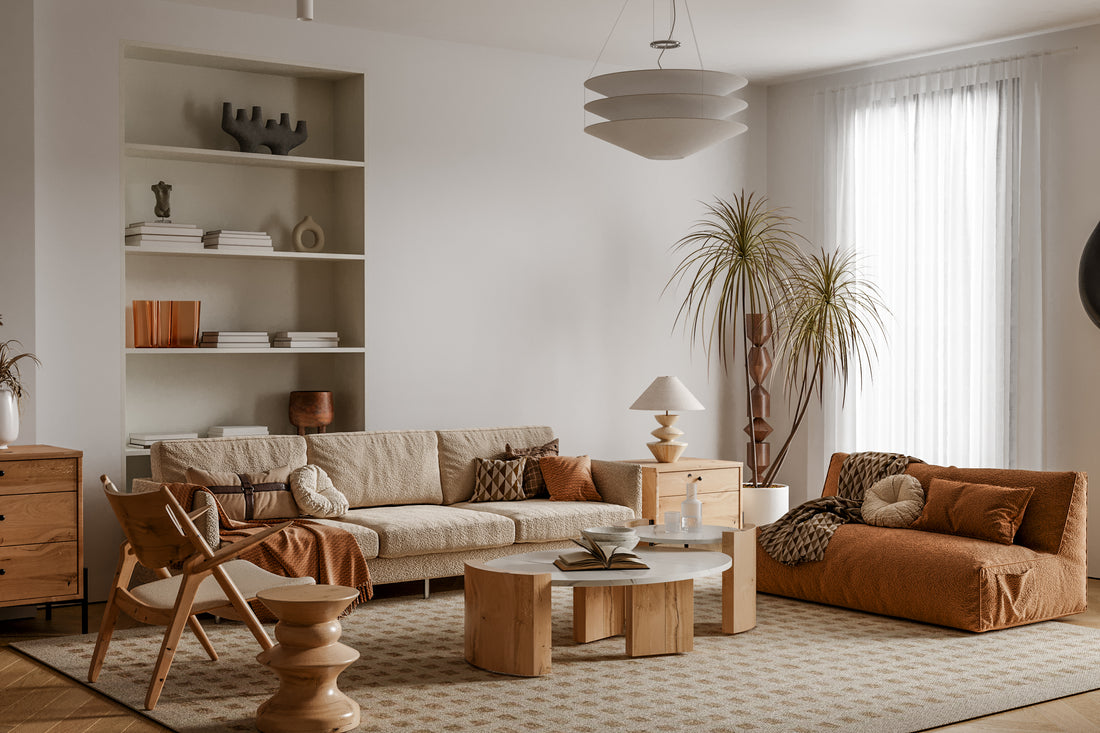
The Ultimate Guide to Living Room Decor: Creating a Space You Love
Share
Your living room is more than just a space where you watch TV or entertain guests—it's the place where you unwind, relax, and truly feel at home. Whether you're starting from scratch or simply want to make some updates, there are a few key principles to consider for designing your dream living room. From choosing the right color scheme to selecting the perfect furniture, this guide will walk you through the steps to achieve a living room that reflects your style and meets your comfort needs.
Step 1: Identify Your Style
Before diving into decorating your living room, take a moment to identify your design style. Are you leaning towards a modern, minimalist look or more of a cozy, rustic vibe? Your personal style will be the foundation for your décor choices. Collect inspiration from magazines, Pinterest, or design blogs to have a clearer vision.
Step 2: Work With What You Have
Assess the room's existing features, like the color of the walls, the type of flooring, and the size and shape of the space. If you're working with a smaller room, focus on functional but stylish pieces that won't clutter your space.
Step 3: Create a Floor Plan
The layout of your furniture plays a significant role in the overall vibe of your room. Make sure to measure your space and create a floor plan. This will help you visualize where each piece of furniture will go, and how much space you'll have left for additional elements.
Step 4: Choose a Focal Point
Every room should have a focal point to draw the eye. This could be a large piece of artwork, a beautiful piece of furniture, or even a fireplace. Your focal point will serve as the anchor for the room, around which all other elements will be arranged.
Step 5: Pick the Right Furniture
-
Sofas and Chairs: Choose comfortable, durable pieces that match your design style. If your living room is small, consider a sectional sofa that maximizes seating without consuming too much space.
-
Coffee Table: Look for a coffee table that complements your sofa and chairs in terms of height, color, and style. The table should be both functional and decorative.
-
Storage: Think about your storage needs. Shelves, cabinets, or entertainment units can be both practical and aesthetically pleasing.
Step 6: Consider the Color Palette
A cohesive color palette can unify the different elements in your room. Stick to two or three main colors and add neutral tones to balance it out. Remember, lighter shades can make a room feel bigger, while darker shades can create a cozy atmosphere.
Step 7: Add Texture and Patterns
Incorporate different textures and patterns to add depth and interest. Cushions, throws, and rugs are excellent for this. They can quickly refresh the look and are easier to change than larger pieces of furniture.
Step 8: Light it Up
-
Ambient Lighting: Use floor lamps or ceiling lights for general illumination.
-
Task Lighting: Reading lamps and table lamps are good for focused tasks.
-
Accent Lighting: Use spotlights or wall lights to highlight artwork or architectural features.
Step 9: Accessorize
-
Art: Personalize your space with artworks that speak to you.
-
Plants: Potted plants can bring life and color to your room.
-
Decorative Items: Small sculptures, books, and other trinkets can add personality.
Step 10: Review and Adjust
Living spaces evolve, so feel free to adjust or swap out items over time. What's important is that the room remains a reflection of you and your tastes.
Conclusion
Creating a living room that feels both beautiful and functional can be a fulfilling experience. By considering your own style, the room's layout, and the various elements that make up a balanced design, you can create a space that you'll be proud to show off and happy to come home to.
